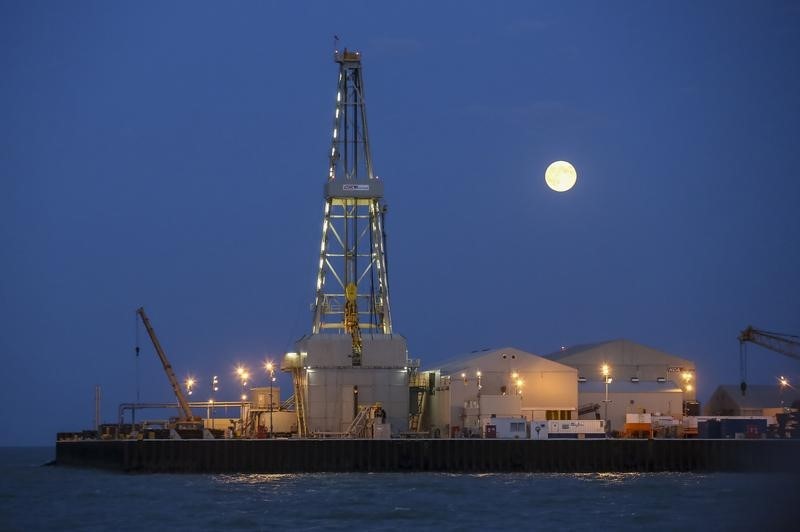Investing.com - Crude oil prices were narrowly mixed on Wednesday after industry estimates showed far larger drop in U.S. crude stocks than expected with tensions on the Korean peninsula in focus as Pyongyang threatens Guam.
On the New York Mercantile Exchange crude futures for September delivery eased 0.16% to $49.09 barrel, while on London's Intercontinental Exchange, Brent was last quoted up 0.15% to $51.99 a barrel.
Crude oil inventories dropped by 7.893 million barrels at the end of last week, the American Petroleum Institute said in estimates released on Tuesday, far more than the 2.2 million barrels decline seen.
The U.S. Energy Information Administration will release its official weekly petroleum status report at 10:30 a.m. ET (1430 GMT) on Wednesday.
Overnight, crude futures settled lower on Tuesday, as rising output from major oil producers offset reports that Saudi Arabia is planning to cut exports to Asia next month.
North Korea said it is considering plans for a missile strike on the U.S. Pacific territory of Guam. The strike plan would be put into practice at any moment once leader Kim Jong Un makes a decision, a spokesman for the Korean People's Army (KPA) said in a statement carried by the North's state-run KCNA news agency.
Saudi Arabia—the world’s largest producer of crude oil—is expected to cut sales of oil supplies to Asia by up to 10% in September, to stem the global crude glut, according to multiple reports Tuesday.
After an initial move higher, crude futures reversed gains, on growing doubts a two-day meeting of Opec and non-Opec on compliance which concludes on Tuesday, would yield tangible results.
“The reality is OPEC has no way of enforcing the production caps,” said Gao Jian, an analyst at SCI International. “That has been the problem of the cartel for many years now.”
In May, Opec and non-Opec members agreed to extend production cuts for a period of nine months until March, but stuck to production cuts of 1.8 million bpd agreed in November last year.
Also adding to concerns over the glut in supply, were reports Libya’s largest oil field, was returning to normal after a brief disruption by armed protesters in the coastal city of Zawiya, the National Oil Corporation (NOC) said Monday.
